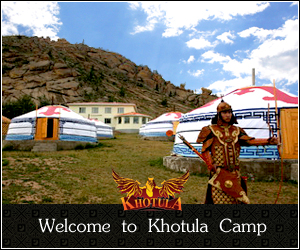Shamanism
 Mongolian religious roots are bound up in Shamanism. However this religious phenomena doesn’t match the conventional description of a religion in the same way as Buddhism or Christianity. Shamanism has no founder from whom its teachings originate. There is no collection of sacred sutras or a bible, as it doesn’t possess any monastic communities to preach or distribute its doctrines. The origins of Shamanism are still unclear, but historians are certain it emerged at the same time as the first human artistic concepts of fetishism, totemism and animism to name just a few. Shamanism was the major religion during both the ancient Mongol states and the Mongol Empire until Tibetan Buddhism (also called Vajrayana Buddhism) gained more popularity after it was introduced in 13th century. Tibetan Buddhism shared the common Buddhist goals of individual release (from suffering and reincarnation). Tibet’s Dalai Lama, who lives in India, is the religions spiritual leader, and is highly respected in Mongolia. Shamanism has continued to be practiced by a few of the ethnic groups living in northern and western Mongolia, including the Tsaatan, who are more commonly known as the reindeer people. Mongolians practice ritualistic magic, nature worship, exorcism, meditation, and natural healing as part of their shamanistic heritage.
Mongolian religious roots are bound up in Shamanism. However this religious phenomena doesn’t match the conventional description of a religion in the same way as Buddhism or Christianity. Shamanism has no founder from whom its teachings originate. There is no collection of sacred sutras or a bible, as it doesn’t possess any monastic communities to preach or distribute its doctrines. The origins of Shamanism are still unclear, but historians are certain it emerged at the same time as the first human artistic concepts of fetishism, totemism and animism to name just a few. Shamanism was the major religion during both the ancient Mongol states and the Mongol Empire until Tibetan Buddhism (also called Vajrayana Buddhism) gained more popularity after it was introduced in 13th century. Tibetan Buddhism shared the common Buddhist goals of individual release (from suffering and reincarnation). Tibet’s Dalai Lama, who lives in India, is the religions spiritual leader, and is highly respected in Mongolia. Shamanism has continued to be practiced by a few of the ethnic groups living in northern and western Mongolia, including the Tsaatan, who are more commonly known as the reindeer people. Mongolians practice ritualistic magic, nature worship, exorcism, meditation, and natural healing as part of their shamanistic heritage.












